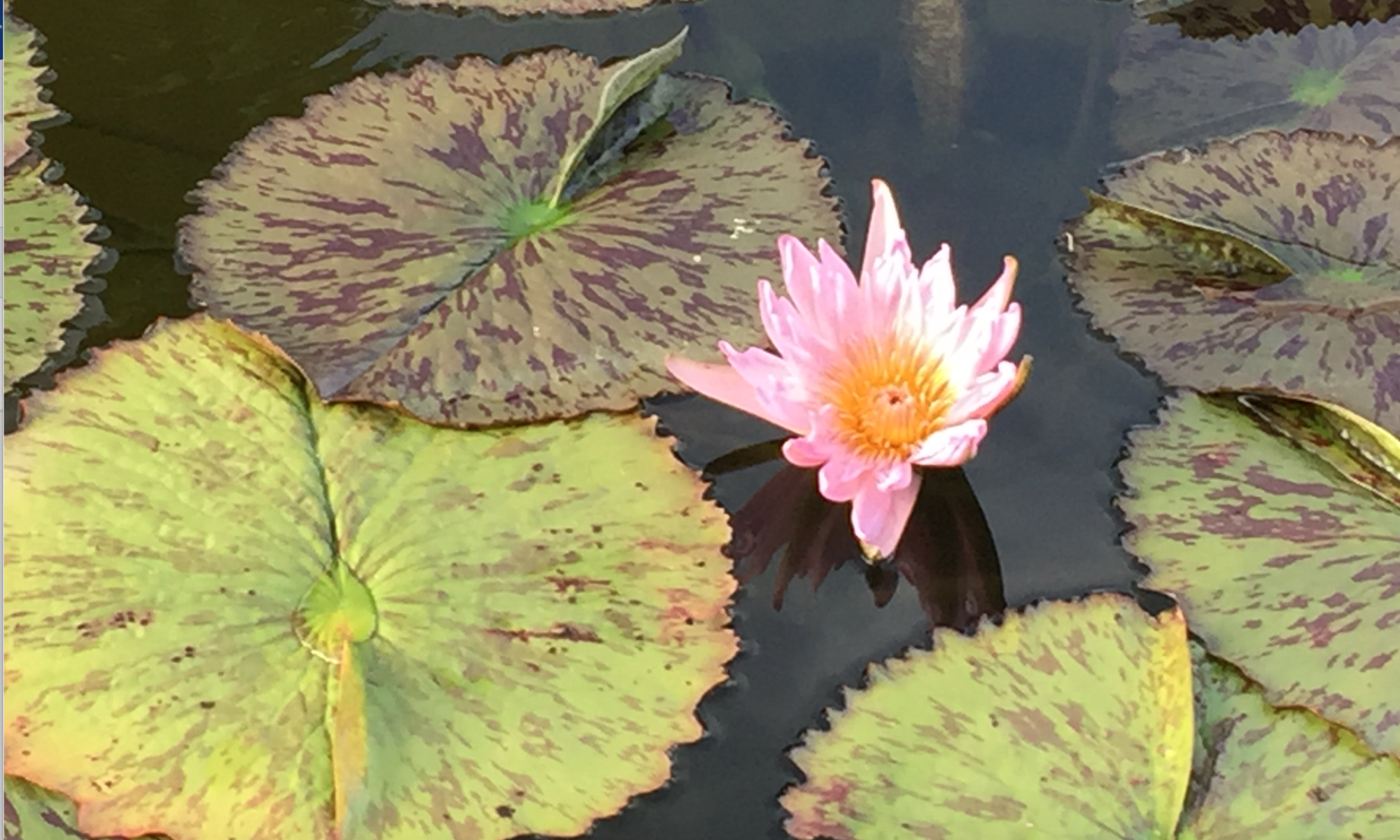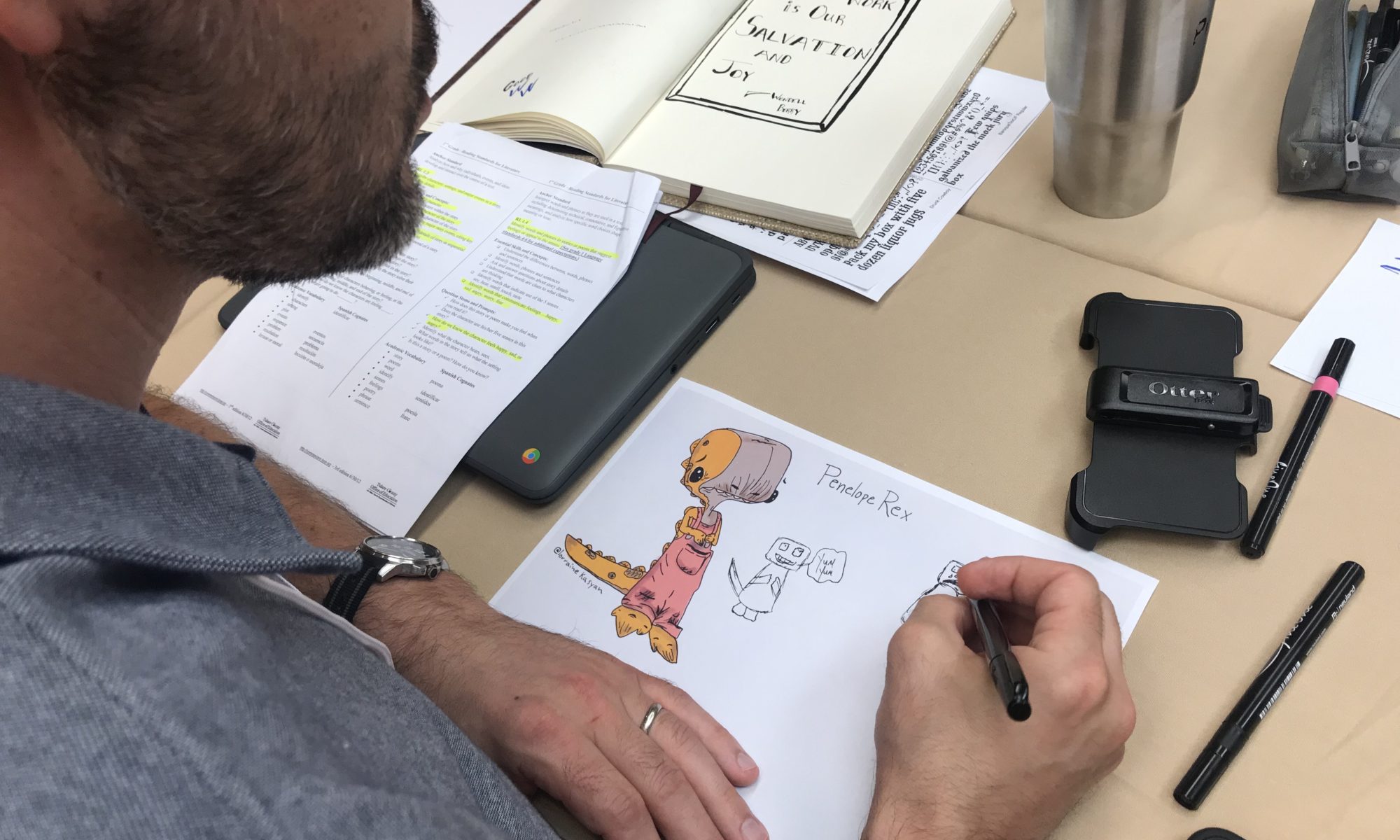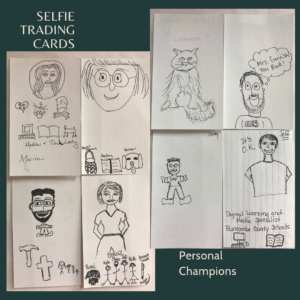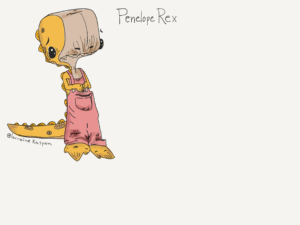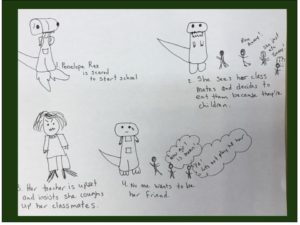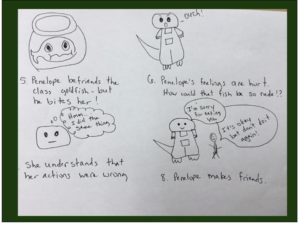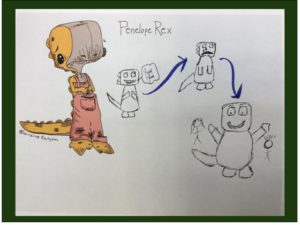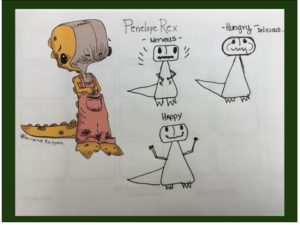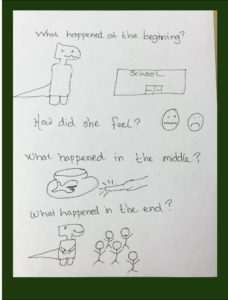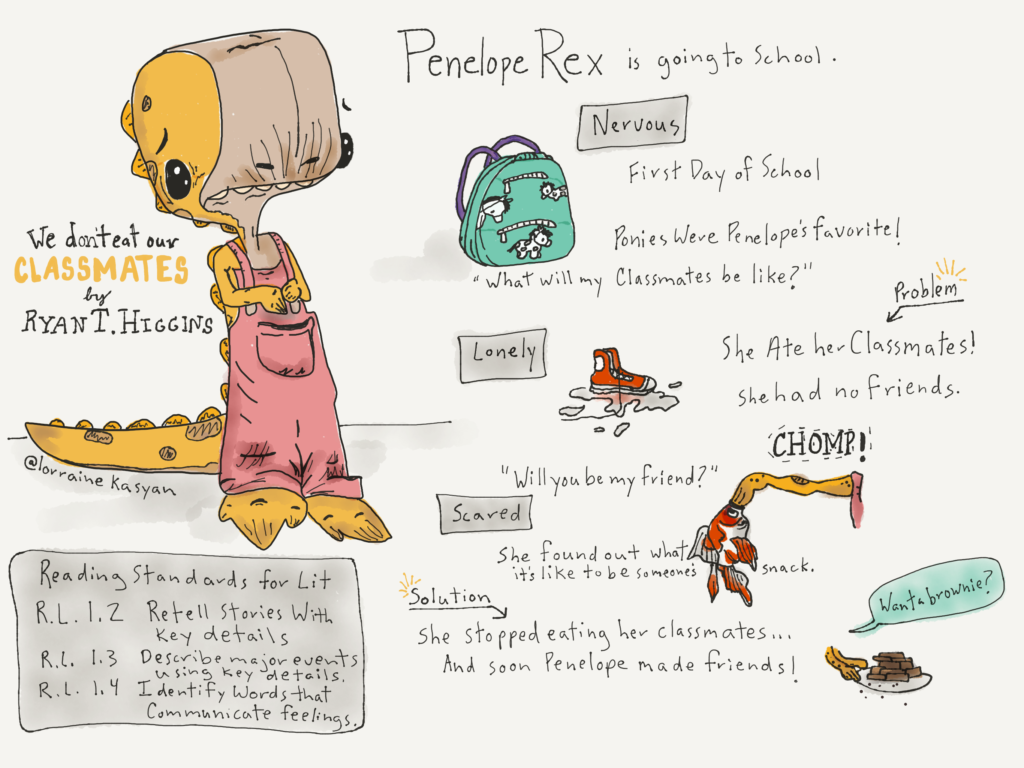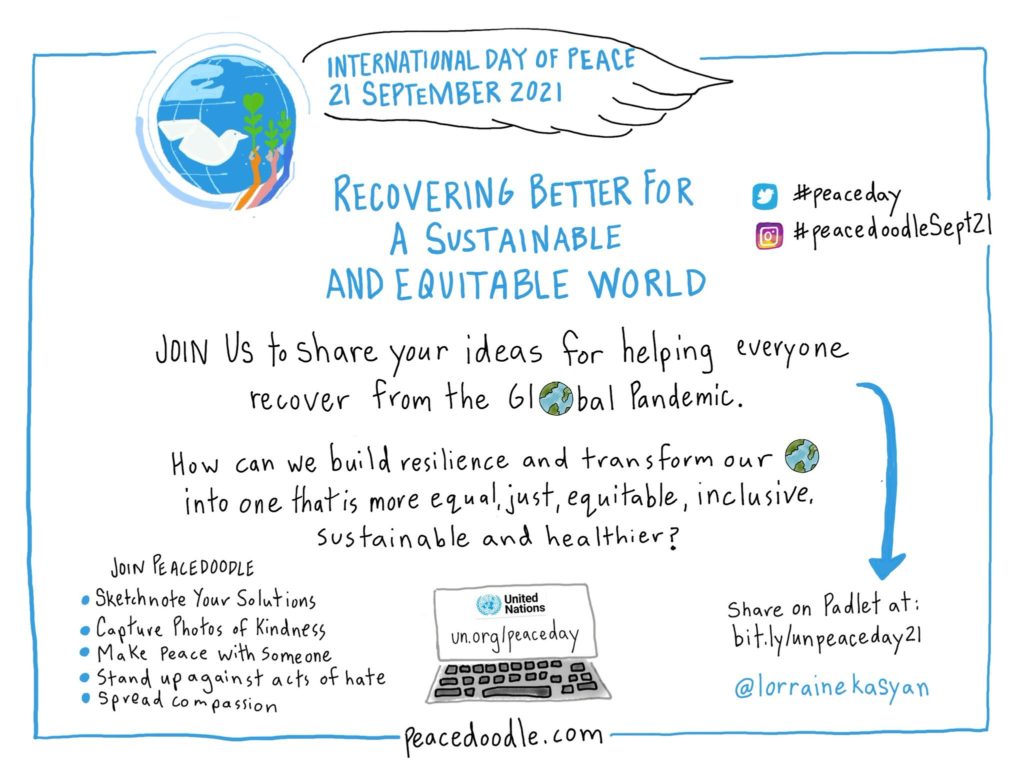
The UN established the International Day of Peace in 1981 as a day devoted to the ideals of peace by observing 24 hours of non-violence and cease-fire and since then it has had a rich and storied history. This year as the entire globe strives to recover from the COVID-19 pandemic there is a call to think together creatively to create a more equal, just, equitable, inclusive, sustainable and healthier world. Peacedoodle wants to help.
There are so many ways to make a difference.
☮️ Sketchnoters are encouraged to sketch their solutions or an action step that can be taken immediately to make a difference. The art will spread peace and your ideas will ripple out far and wide.
☮️ Adults and students can take photos of acts of kindness witnessed around them.
☮️ We can all make peace with someone.
☮️ We can stand up against acts of hate both online and in our regular lives.
☮️ We can spread compassion.
Please join us and share your actions, images, and ideas – big or small. We will collect them here but you can share on Twitter, LinkedIn or Instagram with the hashtags #peacedoodleSept21 and #peaceday There is also a Padlet set up where you can upload your creations, write about your actions, record a video and more.
You can read more here about the initiative and access many resources to share the information with others who want to take action for peace. Let’s make peace with one another. Let’s make peace with nature.
Let’s help the world recover from the devastating divide that has widened between people, especially the marginalized and underprivileged, due to the effects of the pandemic.
Let’s keep it going today and every day.
Peace one doodle at a time.
